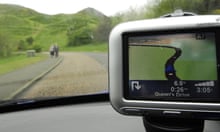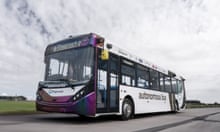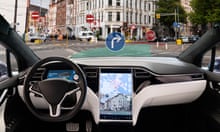Users of self-driving cars should have immunity from a wide range of motoring offences, including dangerous driving, speeding and jumping red lights, Britain’s law commissions have jointly recommended.
The Law Commission for England and Wales and the Scottish Law Commission propose creation of an Automated Vehicles Act to reflect the “profound legal consequences” of self-driving cars. The person in the driving seat would no longer responsible for how the car drives; instead, the company or body that obtained authorisation for the self-driving vehicle would face regulatory sanctions if anything went wrong.
In a summary of the report, published on Wednesday, the commissions say: “While a vehicle is driving itself, we do not think that a human should be required to respond to events in the absence of a transition demand (a requirement for the driver to take control). It is unrealistic to expect someone who is not paying attention to the road to deal with (for example) a tyre blow-out or a closed road sign. Even hearing ambulance sirens will be difficult for those with a hearing impairment or listening to loud music.”
The report says that there should be a clear distinction between driver support and self-driving and that a vehicle should only be classified as the latter if it is safe even when an individual is not monitoring the driving environment, the vehicle or the way that it drives.
The commissions say it should be permissible for an autonomous car to create a transition demand for the driver to take control if it confronts an issue it cannot deal with but it must make the demand in a clear fashion, give the individual sufficient time to respond and be able to mitigate the risk if a human fails to take over, by at least coming to a stop.
In the US, Tesla’s self-driving technology, sold under the brand names Autopilot and Full Self-Driving, have been involved in multiple crashes, including several fatalities, when neither the system nor the driver intervened. The US Department of Transportation is reviewing Tesla’s use of the term “full self-driving”. In Britain, the commissions recommend new safeguards to stop driver assistance features from being marketed as self-driving.
Public law commissioner Nicholas Paines QC said the recommendations presented “an unprecedented opportunity to promote public acceptance of automated vehicles”.
Transport minister Trudy Harrison said: “The development of self-driving vehicles in the UK has the potential to revolutionise travel, making every day journeys safer, easier and greener.
“This government has been encouraging development and deployment of these technologies to understand their benefits. However, we must ensure we have the right regulations in place, based upon safety and accountability, in order to build public confidence. That’s why the department funded this independent report.”
Under the recommendations, which will now be considered by the respective governments, the user-in-charge of a self-driving vehicle would still retain responsibilities such as such as carrying insurance and ensuring that children wear seatbelts. Where vehicles are authorised to drive themselves without anyone in the driver seat, a licensed operator would be responsible for overseeing the journey.








